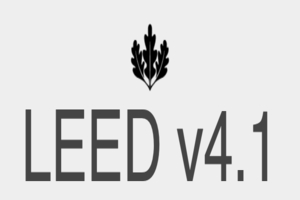LEED v4.1 Certification and Building Product Specification
- < 3 Trends and Events That May Affect Building Product Specification in 2021
- > The Benefits of AIA Webinars for Building Product Manufacturers
Rising concerns about global warming have created ingenious thinking and inventions intended to curb its negative impact on humans and our environment. Over the years, increasing advocacy for environmental consciousness has led to the adoption of green buildings.
Green construction is an applauded trend in the construction industry targeted at cutting down carbon emissions, increasing efficiency, and ensuring healthy and sustainable buildings for commercial and residential construction. The concept of green construction is gaining popularity, and experts (including architects and building product manufacturers) are jumping on board. Without a doubt, it’ll help keep carbon emission in check and promote healthy living.
Whether you are familiar with green construction or new around the block, you can key into the initiative and make the world a better place to live in. All you need to do is familiarize yourself with the LEED v4.1 green building rating system.
Before we dive into LEED v4.1 certification and how it benefits both architects and building product manufacturers, let's look at the benefits of green construction.
What Are The Top Benefits of Green Construction?
The benefits of green construction can be summarized as:
Water conservation
Energy efficiency
Health promotion
Reduced cost for building operation and maintenance
Promoting healthy indoor environment and air quality
Optimizing building performance
Other benefits of green construction include controlled lighting systems, renewable energy integration, waste reduction, water-efficient fittings, and sustainable building designs. Hopefully, you now have more insights into green buildings and construction. Now, you shouldn't have problems wrapping your mind around LEED V 4.1.
What Is LEED v4.1 Certification And Why Is It Important?
LEED is short for Leadership in Energy and Environment Design. It is the yardstick or benchmark for assessing whether green buildings meet stipulated guidelines. It was devised by the USGBC to ensure that green buildings are, in fact, environmentally friendly and sustainable.
As you probably know, traditional buildings can negatively impact the environment because of the high emission of greenhouse gases. To build more energy-efficient houses and reduce carbon footprint, LEED certification guarantees that green buildings comply with regulations and set standards. Thus, reducing pollution and mitigating global warming.
In addition to preserving the environment, green buildings that earn LEED certification also save construction stakeholders and experts costs on utility bills and water bills — which are recurring costs.
How Would You Like Grants And Tax Credits For Your Buildings?
If you are looking to get tax credits from the government, a LEED-certified building could entitle you to one as part of the government's way of encouraging construction stakeholders to embrace the green building initiatives. Other incentives for stakeholders who choose to participate in the green building initiative include local tax breaks, fee waivers, and grants.
Pollution-Free Environment
Recall that green buildings are also designed to promote healthy living. Certified green buildings ensure a healthy indoor environment for its inhabitants. One of the leading causes of discomfort in buildings is indoor air pollution. Take, for instance, a poorly ventilated room can cause illnesses, loss of focus, reduced concentration, and disrupted sleep.
Green buildings offer solutions to all of these challenges, and LEED rating systems reinforce compliance by construction experts, including architects and building product manufacturers worldwide. If you had paid attention to all we have discussed so far, you would have noticed the words "LEED-certified buildings."
What Is LEED Certification?
In simple terms, LEED certification is a program that sets the standards for the design and construction of energy-efficient and water-conserving buildings. Another vital aspect of LEED certification is the rating system, which is cut across design, construction, operation, and maintenance. Every green building will earn points based on the outcome of the certification assessment.
The LEED v4.1 Rating System
The LEED rating system has been around for a while, when the USBGC began its campaign on getting organizations, companies, and experts like building products manufacturers and architects to adopt sustainable designs.The LEED rating system applauded for its flexibility, and its applicable to all stages in construction project development. The rating system is classified into:
Building Design And Construction
This category covers new construction, core, and shells of buildings. It provides a rating for mechanical and electrical works, fire protection, and plumbing.
Interior Design and Construction
Building Construction and Maintenance
Homes
Neighborhood Development.
How Does LEED 4.1 Affect Architects And Building Products Manufacturers?
Before we discuss the benefits of LEED V 4.1, you should note that LEED V 4.1 is an update on the previous rating systems. It's intended to address emerging market realities and dynamics in building performance. Coming years after the launch of LEED V4, the LEED V 4.1 is not a full version change. Instead, it's an update.
Architects and building product manufacturers need to learn the new features and incorporate them into sustainable building materials' designs and production. The highlight of the new LEED version is performance. This is because the campaign on sustainability has gained ground over time, and now the focus has shifted to using modern technology to ensure energy and water efficiency.
What this means for architects and manufacturers in the construction industry is that they must focus on the trend and explore creative and innovative means of incorporating performance and efficiency into building design and manufacturing. Get onboard and launch green buildings to greater heights!
For more information or to discuss the topic of this blog, please contact Brad Blank





